Real-Time and Efficient Traffic Information Acquisition via Pavement Vibration IoT Monitoring System
Abstract
1. Introduction
2. System Composition
3. Acceleration Sensing Node
3.1. Packaging Design
3.2. Printed Circuit Board
3.3. Circuit Design
4. Gateway
4.1. Acquisition Board
4.2. Gateway Composition
4.3. Communication Mechanism
- (1)
- Data compression technology
- (2)
- Overlapping upload mechanism
5. Cloud Platform
5.1. Remote Server
- (1)
- Raw data pre-processing
- (2)
- Same vehicle judgement
- (3)
- Traffic information analysis
- ①
- Speed and wheelbase
- ②
- Number of axles and vehicle type
- ③
- Location of the vehicle load
- ④
- Driving direction
- ⑤
- Traffic volume
5.2. Website Interface
6. Conclusions
- (1)
- The acceleration sensing node replaces voltage signal by the current signal to reduce noise interference in the signal transmission process and voltage drop caused by long-distance transmission. Different from the wireless transmission, the installation of wired sensing nodes requires pavement drilling and cutting, but the damages can be avoided through prefabrication technologies. Wired transmission is more stable in practice, which manifests itself in data communication and power supply. In addition, the acceleration sensing node based on the MEMS technology can integrate low-cost and low-power electronic components through the circuit design of PCB, which realizes data acquisition, filtering, processing, and transmission at the sensing terminal.
- (2)
- The acquisition board collects the current signals of each acceleration sensing node and converts them into voltage signals. The gateway converts the voltage signal into a digital signal and adopts the data compression technology and overlapping uploading mechanism to ensure the efficiency and stability of wireless transmission. The Zlib compression method with a compression rate of 32% decreases the amount of data transmitted wirelessly and reduces energy consumption and communication costs. The adjacent data packages uploaded by the gateway are allowed for 0.5 s repetition, which prevents the loss of feature data in wireless communication.
- (3)
- The cloud platform includes a remote server and a website interface. The remote server decompresses the uploaded data packages and analyzes raw vibration data through using data processing algorithms, including a raw data pre-processing algorithm, a same vehicle judgement algorithm, and a traffic information analysis algorithm. The website visualizes temperature, vehicle lane, time, number of axles, vehicle speed, axle length, and vibration amplitude. The information can be used to assess the impact of traffic load and environmental factors on the pavement.
Author Contributions
Funding
Institutional Review Board Statement
Informed Consent Statement
Data Availability Statement
Acknowledgments
Conflicts of Interest
References
- Hou, Y.; Li, Q.; Zhang, C.; Lu, G.; Cao, D. The State-of-the-Art Review on Applications of Intrusive Sensing, Image Processing Techniques, and Machine Learning Methods in Pavement Monitoring and Analysis. Engineering 2020. [Google Scholar] [CrossRef]
- Ali, N.A.; Taha, A.-E.M.; Barka, E. Integrating Blockchain and IoT/ITS for Safer Roads. IEEE Netw. 2020, 34, 32–37. [Google Scholar] [CrossRef]
- Lal, N.; Kumar, S.; Chaurasiya, V.K. A Road Monitoring Approach with Real-Time Capturing of Events for Efficient Vehicles Safety in Smart City. Wirel. Pers. Commun. 2020, 114, 657–674. [Google Scholar] [CrossRef]
- Kanhere, N.K.; Birchfield, S.T. A Taxonomy and Analysis of Camera Calibration Methods for Traffic Monitoring Applications. IEEE Trans. Intell. Transp. Syst. 2010, 11, 441–452. [Google Scholar] [CrossRef]
- Sanchez-Oro, J.; Fernandez-Lopez, D.; Cabido, R.; Montemayor, A.S.; Pantrigo, J.J. Radar-based road-traffic monitoring in urban environments. Digit. Signal Process. 2012, 23, 364–374. [Google Scholar] [CrossRef]
- Herrera, J.C.; Work, D.B.; Herring, R.; Ban, X.J.; Jacobson, Q.; Bayen, A.M. Evaluation of Traffic Data Obtained via GPS-Enabled Mobile Phones: The Mobile Century Field Experiment. Transp. Res. Part C 2010, 18, 568–583. [Google Scholar] [CrossRef]
- Cerutti-Maori, D.; Sikaneta, I.; Gierull, C.H. Optimum SAR/GMTI Processing and Its Application to the Radar Satellite RADARSAT-2 for Traffic Monitoring. Geosci. Remote Sens. IEEE Trans. 2012, 50, 3868–3881. [Google Scholar] [CrossRef]
- Zhang, Z.; Huang, Y.; Bridgelall, R.; Palek, L.; Strommen, R. Sampling optimization for high-speed weigh-in-motion measurements using in-pavement strain-based sensors. Meas. Sci. Technol. 2015, 26, 065003. [Google Scholar] [CrossRef]
- Jacob, B.; Feypell-de La Beaumelle, V. Improving truck safety: Potential of weigh-in-motion technology. IATSS Res. 2010, 34, 9–15. [Google Scholar] [CrossRef]
- Zhang, W.; Wang, Q.; Suo, C. A novel vehicle classification using embedded strain gauge sensors. Sensors 2008, 8, 6952–6971. [Google Scholar] [CrossRef]
- Xue, W.; Wang, L.; Wang, D. A prototype integrated monitoring system for pavement and traffic based on an embedded sensing network. IEEE Trans. Intell. Transp. Syst. 2015, 16, 1380–1390. [Google Scholar] [CrossRef]
- Mazurek, B.; Janiczek, T.; Chmielowiec, J. Assessment of vehicle weight measurement method using PVDF transducers. J. Electrost. 2001, 51, 76–81. [Google Scholar] [CrossRef]
- Zhang, J.; Lu, Y.; Lu, Z.; Liu, C.; Sun, G.; Li, Z. A new smart traffic monitoring method using embedded cement-based piezoelectric sensors. Smart Mater. Struct. 2015, 24, 025023. [Google Scholar] [CrossRef]
- Xu, D. Fabrication and Properties of Cement Based Piezoelectric Sensor and Its Application Research in Civil Engineering Fields. Ph.D. Thesis, Shandong University, Jinan, China, 2010. [Google Scholar]
- Zhao, H.; Wu, D.; Zeng, M.; Zhong, S. A vibration-based vehicle classification system using distributed optical sensing technology. Transp. Res. Rec. 2018, 2672, 12–23. [Google Scholar] [CrossRef]
- Dong, Z.; Ma, X.; Shao, X. Airport pavement responses obtained from wireless sensing network upon digital signal processing. Int. J. Pavement Eng. 2018, 19, 381–390. [Google Scholar] [CrossRef]
- Hostettler, R. Traffic Counting Using Measurements of Road Surface Vibrations. Master’s Thesis, Lulea University of Technology, Luleå, Swnden, 2009. [Google Scholar]
- Levenberg, E. Estimating vehicle speed with embedded inertial sensors. Trans. Res. Part C Emerg. Technol. 2014, 46, 300–308. [Google Scholar] [CrossRef]
- Wang, X.; Shen, S.; Huang, H.; Almeida, L.C. Characterization of particle movement in Superpave gyratory compactor at meso-scale using SmartRock sensors. Constr. Build. Mater. 2018, 175, 206–214. [Google Scholar] [CrossRef]
- Dan, H.-C.; Yang, D.; Liu, X.; Peng, A.-P.; Zhang, Z. Experimental investigation on dynamic response of asphalt pavement using SmartRock sensor under vibrating compaction loading. Constr. Build. Mater. 2020, 247, 118592. [Google Scholar] [CrossRef]
- Bajwa, R.; Coleri, E.; Rajagopal, R.; Varaiya, P.; Flores, C. Development of a cost-effective wireless vibration Weigh-In-Motion system to estimate axle weights of trucks. Comput. Aided Civ. Infrastruct. Eng. 2017, 32, 443–457. [Google Scholar] [CrossRef]
- Bajwa, R.; Rajagopal, R.; Coleri, E.; Varaiya, P.; Flores, C. In-pavement wireless weigh-in-motion. In Proceedings of the 12th International Conference on Information Processing in Sensor Networks, Philadelphia, PA, USA, 8–11 April 2013; pp. 103–114. [Google Scholar]
- Bajwa, R.; Coleri, E.; Rajagopal, R.; Varaiya, P.; Flores, C. Pavement performance assessment using a cost-effective wireless accelerometer system. Comput.-Aided Civ. Infrastruct. Eng. 2020, 35, 1009–1022. [Google Scholar] [CrossRef]
- Ma, W.; Xing, D.; Mckee, A.; Bajwa, R.; Flores, C.; Fuller, B.; Varaiya, P. A Wireless Accelerometer-Based Automatic Vehicle Classification Prototype System. IEEE Trans. Intell. Transp. Syst. 2014, 15, 104–111. [Google Scholar] [CrossRef]
- Stocker, M.; Silvonen, P.; Rönkkö, M.; Kolehmainen, M. Detection and classification of vehicles by measurement of road-pavement vibration and by means of supervised machine learning. J. Intell. Transp. Syst. 2016, 20, 125–137. [Google Scholar] [CrossRef]
- Kleyko, D.; Hostettler, R.; Lyamin, N.; Birk, W.; Wiklund, U.; Osipov, E. Vehicle Classification Using Road Side Sensors and Feature-free Data Smashing Approach. In Proceedings of the IEEE 19th International Conference on Intelligent Transportation Systems (ITSC), Rio de Janeiro, Brazil, 1–4 November 2016; pp. 1988–1993. [Google Scholar]
- Huang, Y.; Wang, L.; Hou, Y.; Zhang, W.; Zhang, Y. A prototype IOT based wireless sensor network for traffic information monitoring. Int. J. Pavement Res. Technol. 2018, 11, 146–152. [Google Scholar] [CrossRef]
- Rayes, A.; Samer, S. Internet of Things from Hype to Reality; Springer Publishing Company, Incorporated: Berlin/Heidelberg, Germany, 2017. [Google Scholar]
- Zhang, C.; Shen, S.; Huang, H.; Wang, L. Estimation of the Vehicle Speed Using Cross-Correlation Algorithms and MEMS Wireless Sensors. Sensors 2021, 21, 1721. [Google Scholar] [CrossRef] [PubMed]
- Yan, G.; Ye, Z.; Wang, W.; Wang, L. Numerical analysis on distribution and response of acceleration field of pavement under moving load. Int. J. Pavement Res. Technol. 2020, 14, 519–529. [Google Scholar] [CrossRef]
- Bachu, S.; Reddy, K.; Nagabhushanam, K. Design and Monitoring of Smart Roads Based on Weather Data by using IoT. IOP Conf. Ser. Mater. Sci. Eng. 2021, 1084, 012123. [Google Scholar] [CrossRef]
- Dong, J.; Meng, W.; Liu, Y.; Jing, T. A framework of pavement management system based on IoT and big data. Adv. Eng. Inform. 2021, 47, 101226. [Google Scholar] [CrossRef]
- Leizerovych, R.; Kondratenko, G.; Sidenko, I.; Kondratenko, Y. IoT-complex for Monitoring and Analysis of Motor Highway Condition Using Artificial Neural Networks. In Proceedings of the 2020 IEEE 11th International Conference on Dependable Systems, Services and Technologies (DESSERT), Kyiv, Ukraine, 14–18 May 2020; IEEE: Kyiv, Ukraine, 2020; pp. 207–212. [Google Scholar]
- Kumar, A.; Vashishtha, G.; Gandhi, C.; Zhou, Y.; Glowacz, A.; Xiang, J. Novel Convolutional Neural Network (NCNN) for the Diagnosis of Bearing Defects in Rotary Machinery. IEEE Trans. Instrum. Meas. 2021, 70, 1–10. [Google Scholar] [CrossRef]
- Majumdar, S.; Subhani, M.M.; Roullier, B.; Anjum, A.; Zhu, R. Congestion prediction for smart sustainable cities using IoT and machine learning approaches. Sustain. Cities Soc. 2021, 64, 102500. [Google Scholar] [CrossRef]
- Ye, Z.; Wang, L.; Xu, W.; Gao, Z.; Yan, G. Monitoring traffic information with a developed acceleration sensing node. Sensors 2017, 17, 2817. [Google Scholar] [CrossRef]
- Ye, Z.; Xiong, H.; Wang, L. Collecting comprehensive traffic information using pavement vibration monitoring data. Comput. Aided Civ. Infrastruct. Eng. 2020, 35, 134–149. [Google Scholar] [CrossRef]
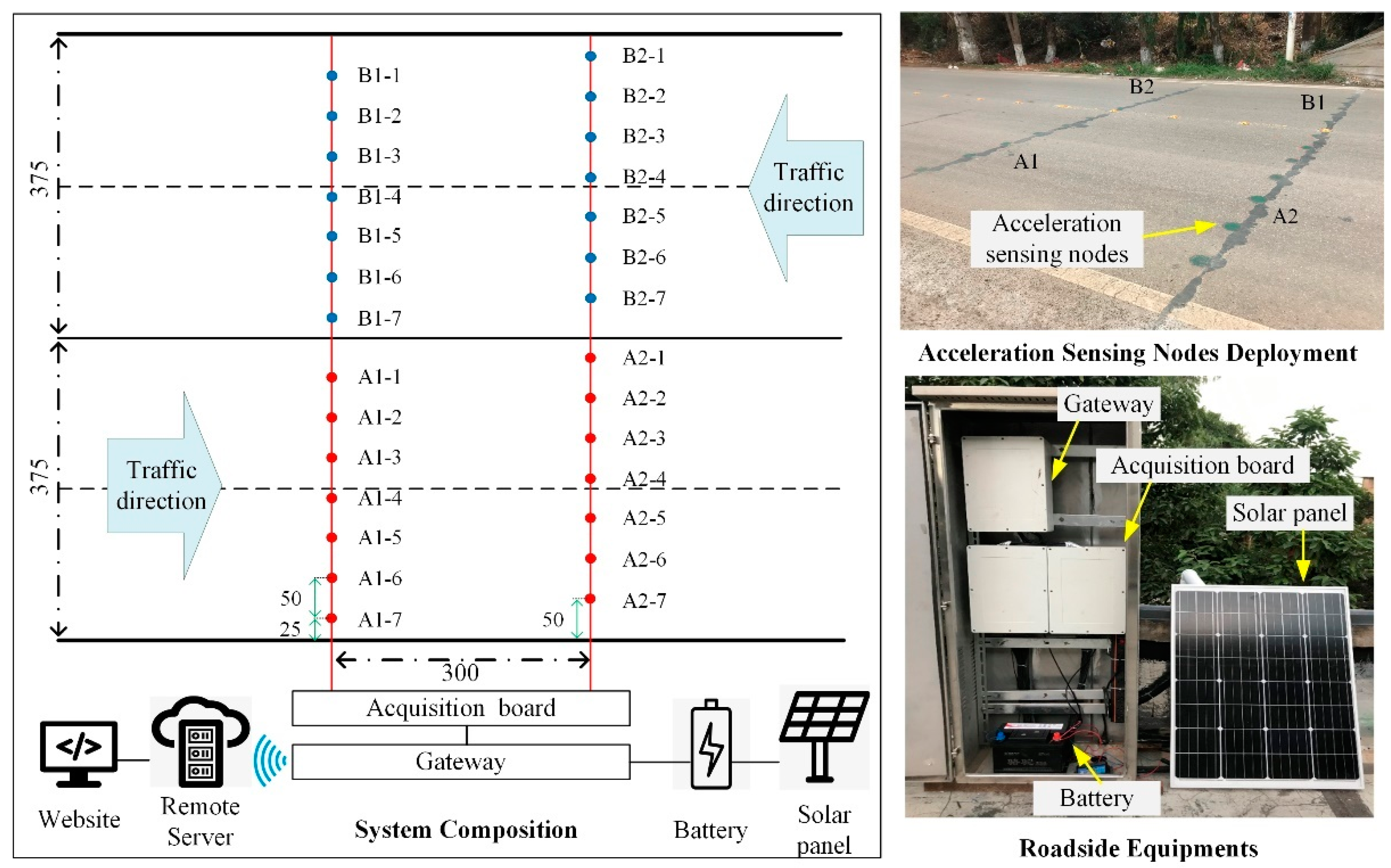

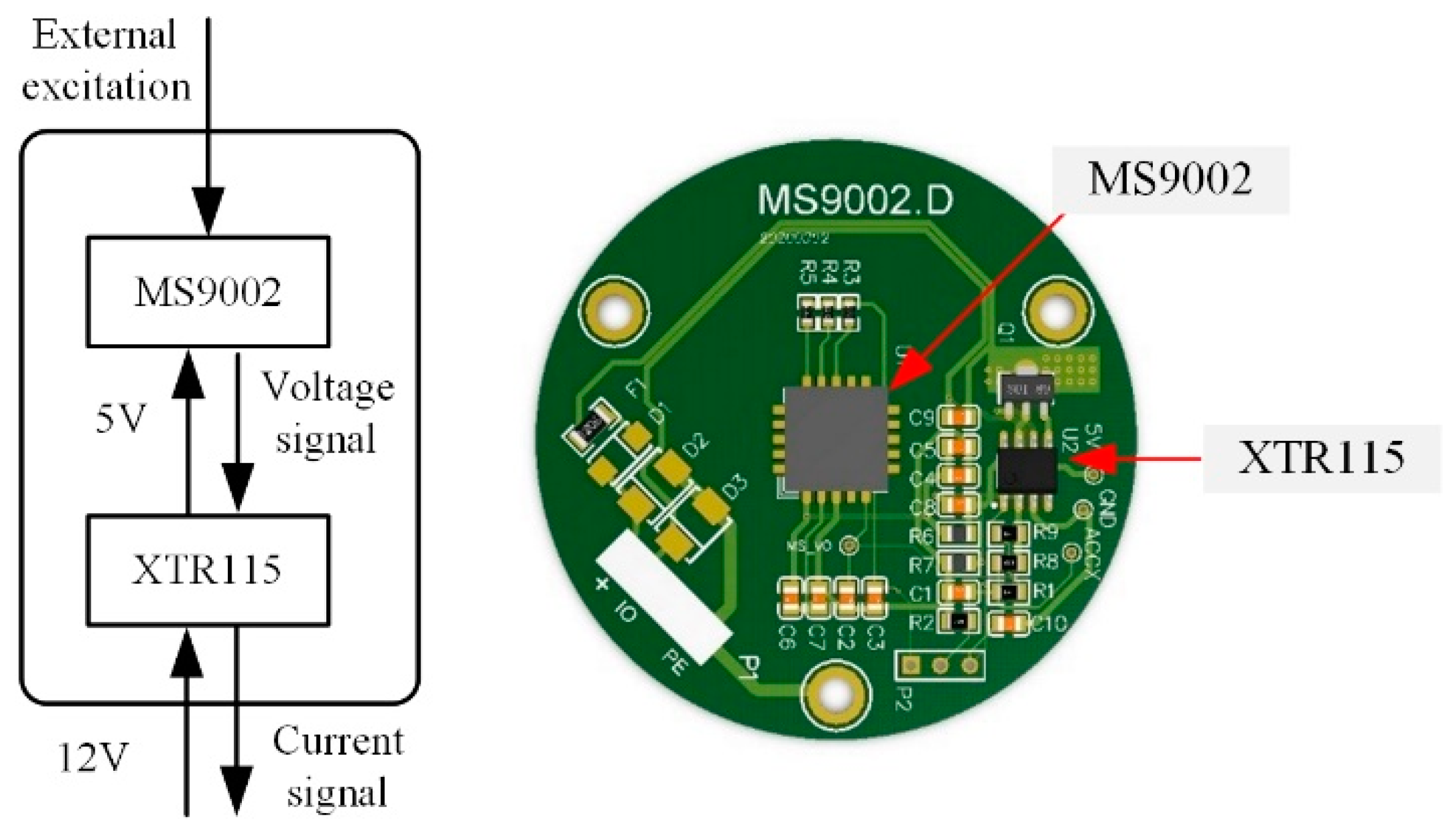
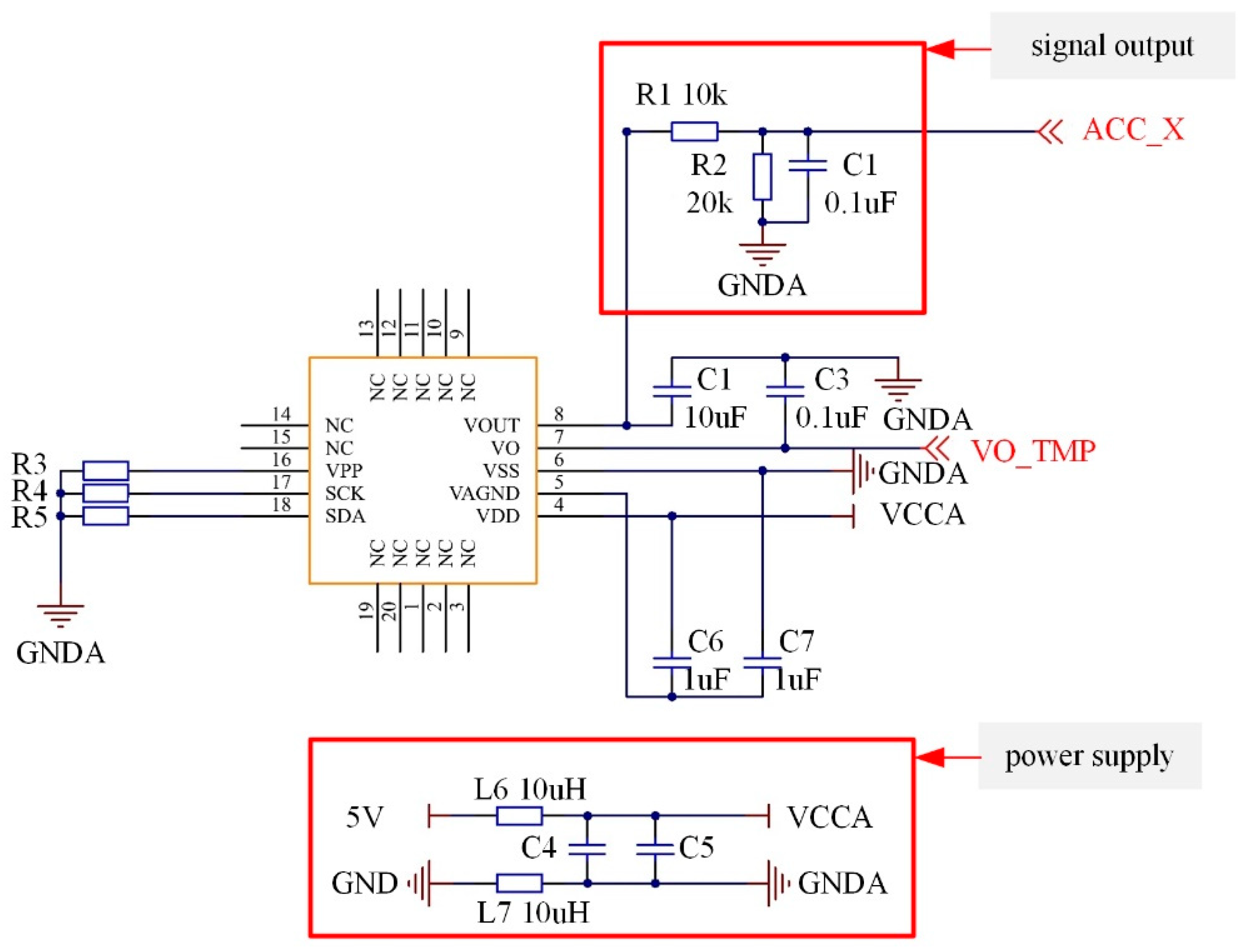

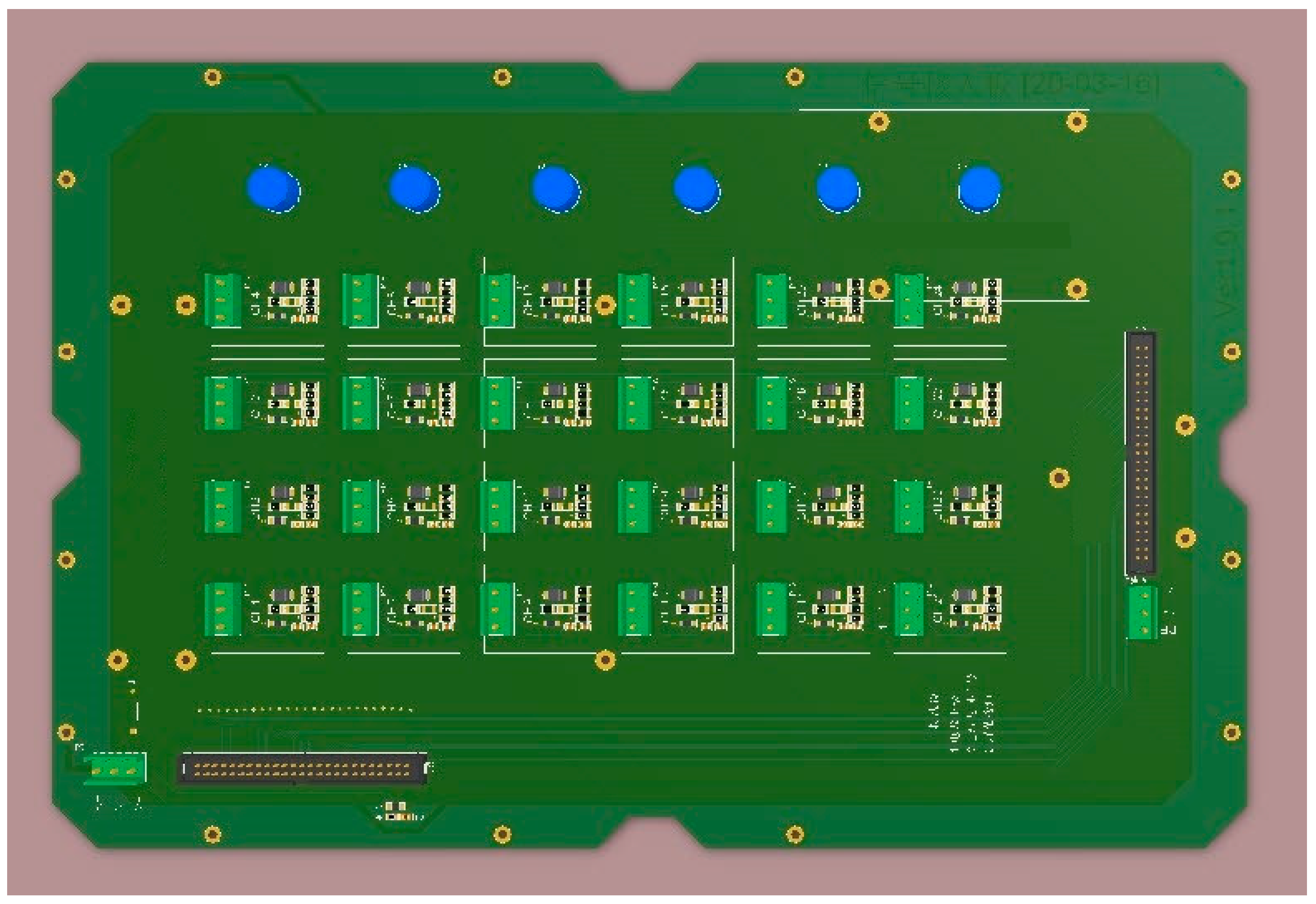





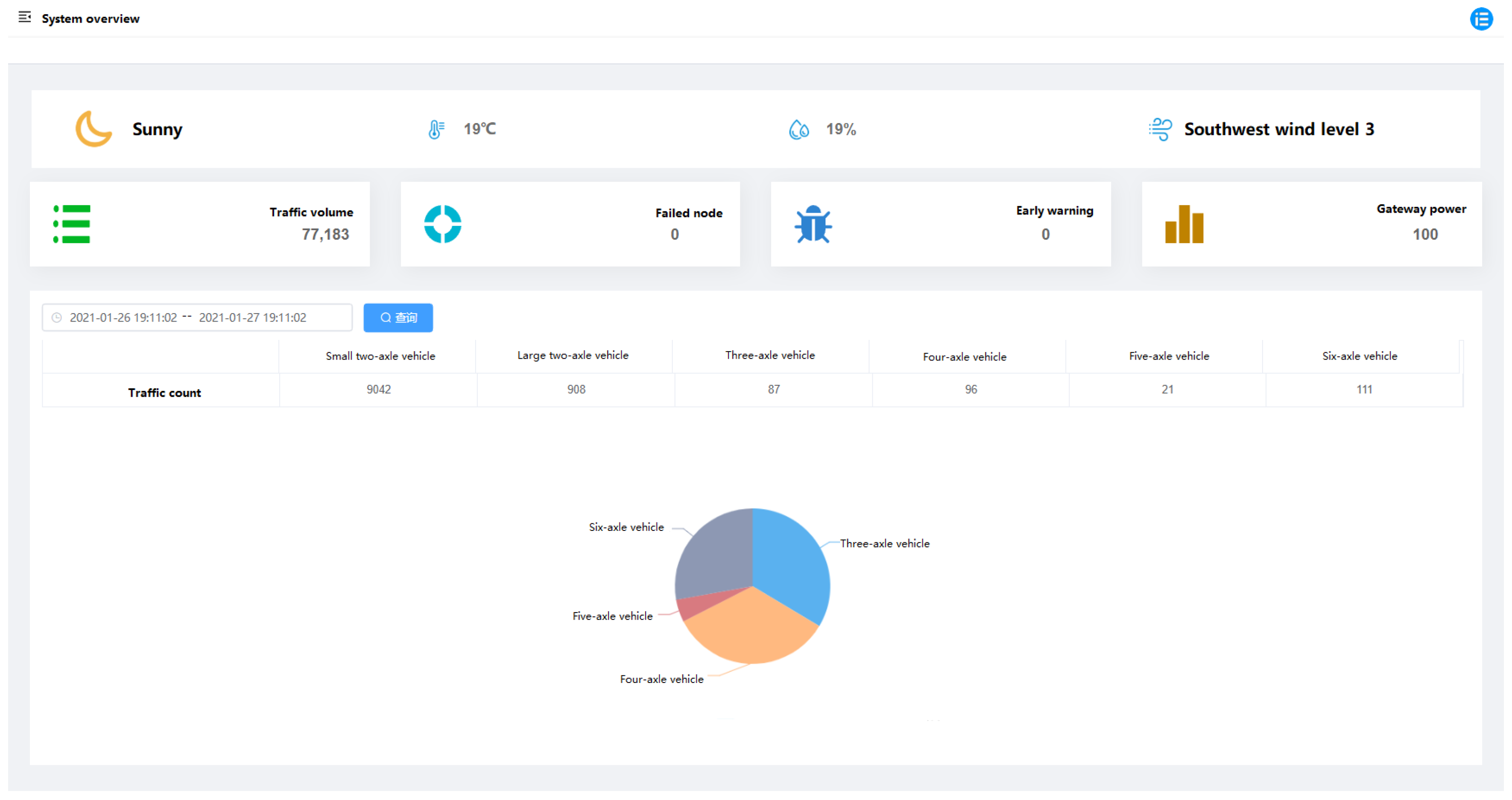

| Commercial Monitoring Method | System Type | Advantages of Our System |
|---|---|---|
| Video monitoring system | Non-embedded |
|
| Geomagnetic monitoring system | Embedded |
|
| Weigh-in-Motion system | Embedded |
|
| No. | Packet Size before Compression (Byte) | Packet Size after Compression (Byte) | Compression Ratio |
|---|---|---|---|
| 1 | 1,488,020 | 488,529 | 32.83 |
| 2 | 1,488,020 | 473,625 | 31.83 |
| 3 | 1,488,020 | 472,366 | 31.74 |
| 4 | 1,488,020 | 478,555 | 32.16 |
| 5 | 1,488,020 | 490,769 | 32.98 |
| Lane | Time | Number of Axles | Vehicle Speed (km/h) | Axle Length (m) | Vibration Amplitude (mg) |
|---|---|---|---|---|---|
| A | 10/Jan/2021 23:16:03 | 3 | 44.26 | [5.19, 3.86, 1.33, 0, 0, 0] | [1193.95, 820.05, 373.91] |
| A | 10/Jan/2021 23:13:46 | 3 | 43.90 | [4.66, 3.32, 1.34, 0, 0, 0] | [343.25, 73.06, 270.19] |
| B | 10/Jan/2021 22:44:56 | 6 | 28.88 | [12.31, 3.29, 1.35, 5.05, 1.31, 1.32] | [1108.05, 464.25, 643.80] |
| B | 10/Jan/2021 22:41:40 | 4 | 38.85 | [7.23, 1.88, 3.99, 1.36, 0, 0] | [276.28, 92.92, 183.36] |
| A | 10/Jan/2021 22:31:26 | 6 | 28.57 | [13.12, 3.30, 1.32, 5.88, 1.33, 1.29] | [1769.06, 831.29, 937.77] |
| A | 10/Jan/2021 22:31:20 | 6 | 29.35 | [12.79, 1.78, 2.72, 5.68, 1.30, 1.32] | [2224.27, 1247.13, 977.14] |
| B | 10/Jan/2021 22:19:30 | 3 | 32.14 | [5.73, 4.38, 1.36, 0, 0, 0] | [187.56, 82.31, 105.25] |
| A | 10/Jan/2021 22:16:23 | 6 | 30.17 | [12.95, 3.13, 1.36, 5.89, 1.29, 1.29] | [1909.21, 1428.77, 480.44] |
| A | 10/Jan/2021 22:08:10 | 6 | 29.35 | [13.63, 3.16, 1.40, 6.57, 1.35, 1.14] | [1283.00, 992.17, 290.83] |
| B | 10/Jan/2021 22:03:32 | 6 | 25.12 | [12.47, 3.29, 1.33, 5.52, 1.16, 1.17] | [331.62, 166.21, 165.41] |
Publisher’s Note: MDPI stays neutral with regard to jurisdictional claims in published maps and institutional affiliations. |
© 2021 by the authors. Licensee MDPI, Basel, Switzerland. This article is an open access article distributed under the terms and conditions of the Creative Commons Attribution (CC BY) license (https://creativecommons.org/licenses/by/4.0/).
Share and Cite
Ye, Z.; Yan, G.; Wei, Y.; Zhou, B.; Li, N.; Shen, S.; Wang, L. Real-Time and Efficient Traffic Information Acquisition via Pavement Vibration IoT Monitoring System. Sensors 2021, 21, 2679. https://doi.org/10.3390/s21082679
Ye Z, Yan G, Wei Y, Zhou B, Li N, Shen S, Wang L. Real-Time and Efficient Traffic Information Acquisition via Pavement Vibration IoT Monitoring System. Sensors. 2021; 21(8):2679. https://doi.org/10.3390/s21082679
Chicago/Turabian StyleYe, Zhoujing, Guannan Yan, Ya Wei, Bin Zhou, Ning Li, Shihui Shen, and Linbing Wang. 2021. "Real-Time and Efficient Traffic Information Acquisition via Pavement Vibration IoT Monitoring System" Sensors 21, no. 8: 2679. https://doi.org/10.3390/s21082679
APA StyleYe, Z., Yan, G., Wei, Y., Zhou, B., Li, N., Shen, S., & Wang, L. (2021). Real-Time and Efficient Traffic Information Acquisition via Pavement Vibration IoT Monitoring System. Sensors, 21(8), 2679. https://doi.org/10.3390/s21082679










